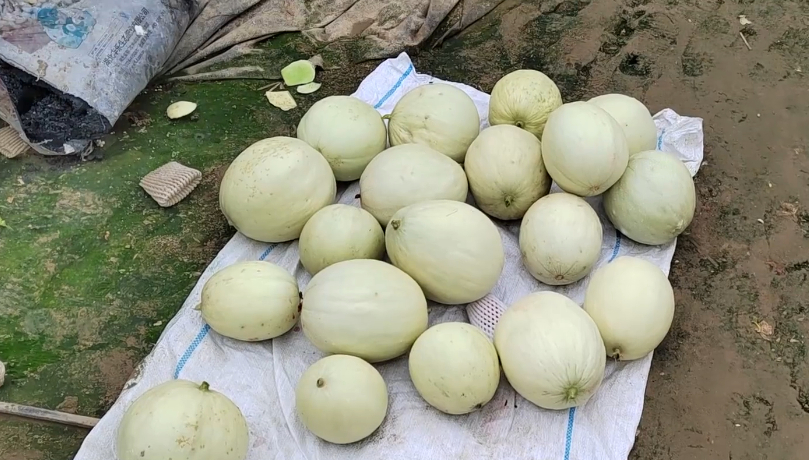Improper management of water and fertilizer, no wonder the melon is not sweet, the correct fertilization method of melon should be known in gardening
If you want melon to sell at a good price, you must have high commerciality and sweetness. However, melons grown by some farmers have a good appearance, but they are tasteless and have a very bad taste. Whether the sugar content of melon is high or not is related to variety, water and fertilizer, light and temperature. In the late stage of melon fruit swelling, many farmers began to control water and fertilizer, in order to increase the accumulation of dry matter and taste sweeter.
In fact, to improve the sweetness by controlling the water and fertilizer in the late stage of melon is undoubtedly to encourage the seedlings. Why do many farmers use this method, but we don't suggest it? Because in the late stage of melon expansion, the second crop of melon above is still growing, if water and fertilizer are controlled in this period, it will inevitably affect the yield.

Through water and fertilizer management, to improve the sugar content of muskmelon, a scientific fertilization plan should be made during the whole growth period. Only when the plants grow strong, the taste of fruits is naturally not bad, instead of just relying on the later days to quickly sweeten. Farmers should pay attention to the following two aspects when planting melons.
First, during the growth period of melon, many farmers are used to using balanced fertilizer with potassium fertilizer or high-nitrogen compound fertilizer. It is unreasonable to use this formula throughout the growth period. For example, the balance of nitrogen, phosphorus and potassium elements often leads to excessive phosphorus. The use of high nitrogen fertilizer will cause the melon seedlings to flourish, and the melon can't sit still.
Generally, we usually use a fertilization formula with medium nitrogen, low phosphorus and high potassium. From the beginning of planting seedlings to the end, we don't change other formulas. The plants grow strong and the fruit quality is high. Don't worry about less nitrogen and less phosphorus, because crop growth requires balanced fertilization, which doesn't mean that high nitrogen fertilizer must be used when seedlings grow.
Second, the amount of fertilizer used each time should be determined according to the EC value, that is, the fertilizer concentration. In the past, when some farmers applied fertilizer, they used how many kilograms per mu of land, some 20 kilograms and some 40 kilograms. The root system of melon is weak and salt-intolerant. If too much fertilizer is applied, the root system will be damaged and premature senescence will occur. Therefore, melon should be fertilized a few times.
Before the melon swells, the EC is less than 2, and the nutrients needed in this period need not be too much. At the later stage of growth, melon nutrition and reproductive growth nutrient demand are high, and EC is increased to 2.5. At the same time, local water sources should be considered and fertilizer concentration should be appropriately adjusted. Applying fertilizer according to the concentration of fertilizer is more scientific and can meet the nutritional needs of melon.
Therefore, the management of water and fertilizer not only determines the yield, but also affects the taste. During the whole growth period, choose a scientific fertilization scheme, and at the same time, control the fertilizer concentration. Only in this way can the plants grow well and provide nutrients continuously, so that the sweetness of melon can be improved, and the growth of the second crop melon will not be affected, thus ensuring the yield. In addition, it is also helpful to ensure sufficient light and appropriate temperature in the later stage of fruit expansion to improve sweetness.


Dejar un comentario: